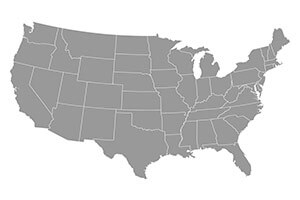
We’re still feeling the effects of last winter in much of the country. We’ve been saying for months that all the moisture in the ground portends a good honey crop. Unfortunately for some areas, moisture ON the ground portends crop failure — for both farm crops and honey.
Northeast
Things dried out in New Hampshire — maybe a bit too much — and that has combined with cool weather to produce a honey crop an estimated 10-20 percent below normal levels.
New York also expects a slightly lower crop than usual, as the wet spring delayed planting season and reduced the locust crop. Blackberry, clover and knapweed are providing good crops though. Bee populations are healthy overall, and swarm control was as important as ever.
In Pennsylvania, wet weather lasted longer, but if the sun can stay out long enough, ground moisture is expected to contribute to a nice honey crop. Demand for local honey is stronger than ever, but there is still “too much foreign junk” being blended by unscrupulous packers in the industrial market.
Mideast
May was dry in Kentucky, and the tulip poplar and linden flows were nonexistent. But eastern Kentucky saw its first sourwood flow in four years. Locust and blackberry were good producers in south central Kentucky, but that region saw poor honey production overall. It was a good year to raise queens, with a good drone population.
Tennessee saw good crops of white Dutch clover and sourwood honey, but tulip poplar and persimmon were poor producers and honey production is expected to be down by about half.
Southeast
Production is up slightly in Mississippi, with privet and tallow leading the way.
A mall in Jacksonville, Florida sports a vending machine dispensing local honey. Hopefully there will be enough local honey to dispense, as most of the state’s reporters predict a down year for production. But there appears to be no shortage of cheap imported honey.
Alabama has seen hot, dry weather, with fair production from sumac, mimosa, clover, privet and crepe myrtle. Demand for local honey is as strong as ever, but honey crops are down slightly from last year.
Georgia’s crop looks a little bit better than normal.
Southwest
Imports continue to depress prices in Louisiana, and the crop looks to be a bit lower than last year, with tallow leading the way.
New Mexico saw a busy swarm season, and bees in the trees did not help the early honey crop, but Russian olive and knapweed helped the bees to catch up. Chunk comb honey is bringing $10-12 per pound.
East Central
It looks like a poor year for honey production in Michigan. Colonies look fine with feeding, but it’s just been too rainy for them to collect enough nectar.
Wisconsin has also been too wet, and many plants just did not flower as a result. Among those that did, the apple trees were good in the western part of the state, and black locust in the east. Alfalfa and raspberry underperformed. Many of the small dairy farmers are selling out to the larger operators, some of whom add the cows to their own herds but re-sell the land to grain farmers. Much of this land then goes to corn for ethanol production.
More out-of-state beekeepers are coming to Wisconsin for cranberry pollination, and some are running afoul of strict state inspectors for not properly registering on the way in. The cranberry crop was late this year and production was low, along with honey crops in general. USDA reported a 2% increase in 2018 honey production nationwide, but a 23% decrease in Wisconsin. This year does not look to be a banner year either.
Eastern Illinois saw a good white Dutch clover flow, which along with dandelions made up for a poor showing by honey locust and sweet clover. In the northeast, production is way down; persistent cold and rain suppressed the dandelion and locust flows, and no other crops stepped up to take their place.
Indiana looks better, with clover and soybeans producing well. The northern part of the state is down a little due to cold and rain. Retail demand for local honey is good, due in part to continued media exposure of adulterated honey in supermarkets.
West Central
In Nebraska the dandelion flow was good, and the clovers were very productive. Spring was late, but it looks like a decent honey crop. The increased popularity of pollinator plots doesn’t hurt either.
The spring honey flow was lousy in Kansas — a long winter, a wet spring, and things still haven’t caught up. The north central region was just starting its nectar flow in July, so ….


